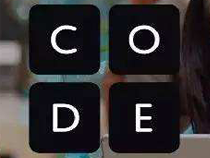in Java
1
2
3
4
5
6
7
8
9
10
11
12
13
14
15
16
17
18// PrintIndependenceDay.java import java.util.Calendar; import java.util.Date; public class PrintIndependenceDay { public static void main(String[] args) { Calendar calendar = Calendar.getInstance(); calendar.clear(); calendar.set(Calendar.MONTH, Calendar.JULY); calendar.set(Calendar.DATE, 4); calendar.set(Calendar.YEAR, 1776); Date time = calendar.getTime(); System.out.println(time); } }
in Groovy:
1
2
3
4
5
6
7
8
9
10// PrintIndependenceDay.groovy def calendar = Calendar.instance calendar.with { clear() set MONTH, JULY set DATE, 4 set YEAR, 1776 println time }
每个 Groovy闭包有个与其关联的delegate(代理人).
1
2
3
4
5
6
7
8
9
10
11
12
13
14
15// define a closure def myClosure = { // call a method that does not exist append 'Jeff' append ' was here.' } // assign a delegate to the closure def sb = new StringBuffer() myClosure.delegate = sb // execute the closure myClosure() assert 'Jeff was here.' == sb.toString()
换一种写法:
1
2
3
4
5
6
7
8
9
10def closure = { clear() set MONTH, JULY set DATE, 4 set YEAR, 1776 println time } def calendar = Calendar.instance closure.delegate = calendar closure()
Another bit of info that is missing here is the strategy that a closure uses to decide when to send method calls to the delegate. Each Groovy closure has a resolveStrategy associated with it. This property determines how/if the delegate comes in to play. The 4 possible values for the resolveStrategy are OWNER_FIRST, DELEGATE_FIRST, OWNER_ONLY and DELEGATE_ONLY (all constants defined in groovy.lang.Closure). The default is OWNER_FIRST. Consider the owner to be the "this" wherever the closure is defined. Here is a simple example...
1
2
3
4
5
6
7
8
9
10
11
12
13
14
15
16
17
18
19
20
21
22
23
24
25
26
27
28
29
30
31
32
33
34class ResolutionTest { def append(arg) { println "you called the append method and passed ${arg}" } def doIt() { def closure = { append 'Jeff was here.' } def buffer = new StringBuffer() closure.delegate = buffer // the append method in this ResolutionTest // will be called because resolveStrategy is // OWNER_FIRST (the default) closure() // give the delegate first crack at method // calls made inside the closure closure.resolveStrategy = Closure.DELEGATE_FIRST // the append method on buffer will // be called because the delegate gets // first crack at the call to append() closure() } static void main(String[] a) { new ResolutionTest().doIt() } }
运行结果:
1you called the append method and passed Jeff was here.
来源:
http://java.dzone.com/news/getting-groovy-with-with
最后
以上就是甜蜜蜜蜂最近收集整理的关于Groovy 中的 with的全部内容,更多相关Groovy内容请搜索靠谱客的其他文章。
![[Training Video - 4] [Groovy] Optional parameter in groovy](/uploads/reation/bcimg14.png)







发表评论 取消回复